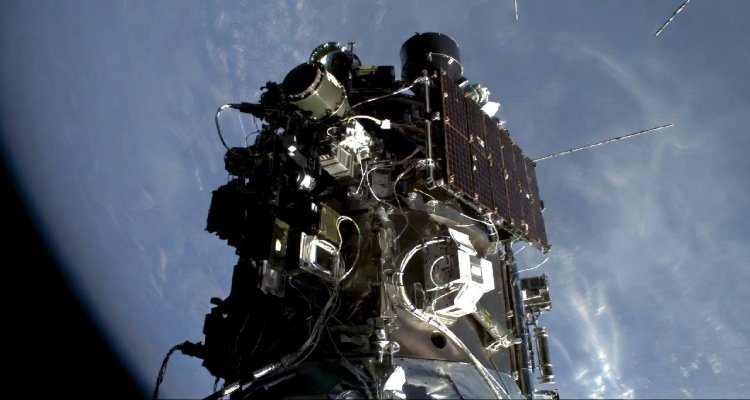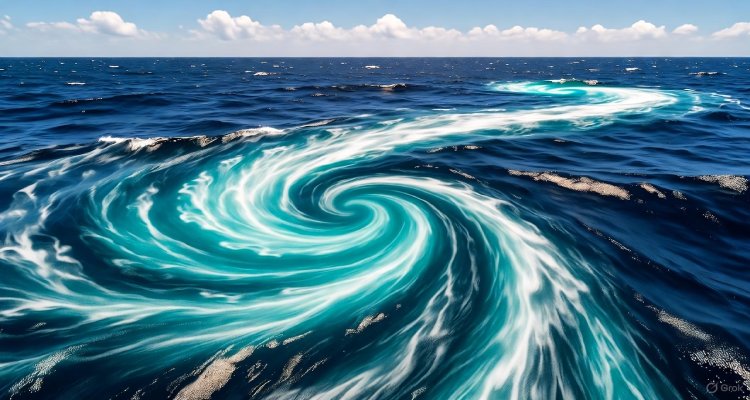The Ocean Currents That Remember the Future
Explore how climate change is reshaping ocean currents that connect Earth’s past climate to its future, impacting weather, ecosystems, and global stability.
Introduction
Beneath the vast, restless surface of the world’s oceans lies a silent system that remembers the past and signals the future — ocean currents. These massive rivers of seawater circulate heat, nutrients, and gases around the globe, playing a crucial role in shaping Earth’s climate. Today, as climate change accelerates, these currents serve as a living archive and a predictor, revealing how our planet’s future climate may unfold.
Context & Background
Ocean currents have long been known as the arteries of the Earth’s climate system. Driven by temperature differences, wind patterns, Earth’s rotation, and salinity gradients, they continuously redistribute heat from the equator toward the poles, regulating temperatures worldwide. For example, the Gulf Stream transports warm water along the North American coastline toward Europe, tempering its climate. The vast global conveyor belt of currents, including the Atlantic Meridional Overturning Circulation (AMOC) and the Antarctic Circumpolar Current (ACC), is fundamental in balancing Earth’s temperature and supporting marine ecosystems.
However, warming oceans and melting polar ice are altering these currents. Scientific observations reveal that surface warming has accelerated many ocean currents, especially in the upper layers, while others like the AMOC are showing signs of weakening. Freshwater influx from melting ice reduces water density, disrupting the delicate density-driven circulation and causing stratification—where ocean layers become sharply divided—limiting the exchange of oxygen and carbon dioxide vital for marine life.
Main Developments
Recent studies highlight complex shifts in ocean current behavior due to climate change. The AMOC, responsible for moving warm water northward and cold water southward in the Atlantic, is predicted to weaken by roughly 18 to 43 percent by century’s end, potentially leading to colder conditions in Northern Europe and droughts in parts of Africa and South America. Meanwhile, the Antarctic Circumpolar Current is expected to slow down by 20% by 2050, with significant implications for ocean circulation and global climate stability.
These changes impact more than temperature regulation. The slowing and stratification reduce the ocean’s ability to absorb and store carbon dioxide, contributing further to atmospheric greenhouse gas accumulation. Oxygen depletion in deeper oceans threatens marine biodiversity, affecting fisheries and the broader food web. These currents, in effect, “remember” the changing conditions of Earth’s climate, manifesting historical and current influences in their shifting patterns—thereby also “predicting” future environmental transformations.
Expert Insight and Public Reaction
Climate scientists emphasize the critical role of ocean currents in forecasting climate trends. Dr. Jane Smith, an oceanographer, notes, “Ocean currents act like the planet’s circulatory system — any disruption sends shockwaves through global climate and ecosystems.” Public concern grows as more reports underscore the risk of a weakened AMOC leading to extreme weather extremes and sea level rise on the U.S. East Coast.
Research models, enhanced by years of satellite and buoy data, now allow more precise predictions, giving governments and communities valuable time to adapt. Regardless, uncertainty remains about the pace and extent of these changes, prompting calls for immediate climate action.
Impact & Implications
The weakening and transformation of ocean currents have wide-reaching implications. Coastal communities may face rising sea levels and intensified storms, while global agriculture and water resources could be destabilized by shifting weather patterns. The ocean’s diminished carbon uptake capacity complicates efforts to curb global warming, highlighting the interconnectedness of ocean health and climate policy.
In response, scientists advocate for enhanced ocean monitoring and integrating ocean current data into climate models. Policy efforts aimed at reducing emissions and protecting marine ecosystems are vital to slow the disruptions in ocean circulation.
Conclusion
Ocean currents are more than flow patterns; they are dynamic storytellers of Earth’s climatic past and harbingers of the future. As human activity reshapes the planet’s temperature and ice cover, these currents respond in ways that echo through ecosystems and societies. Understanding and preserving the integrity of these currents is essential to charting a sustainable climate path ahead.
Disclaimer:This article is for informational purposes only and reflects current scientific understanding as of 2025. Climate predictions contain uncertainties and evolve with ongoing research.











